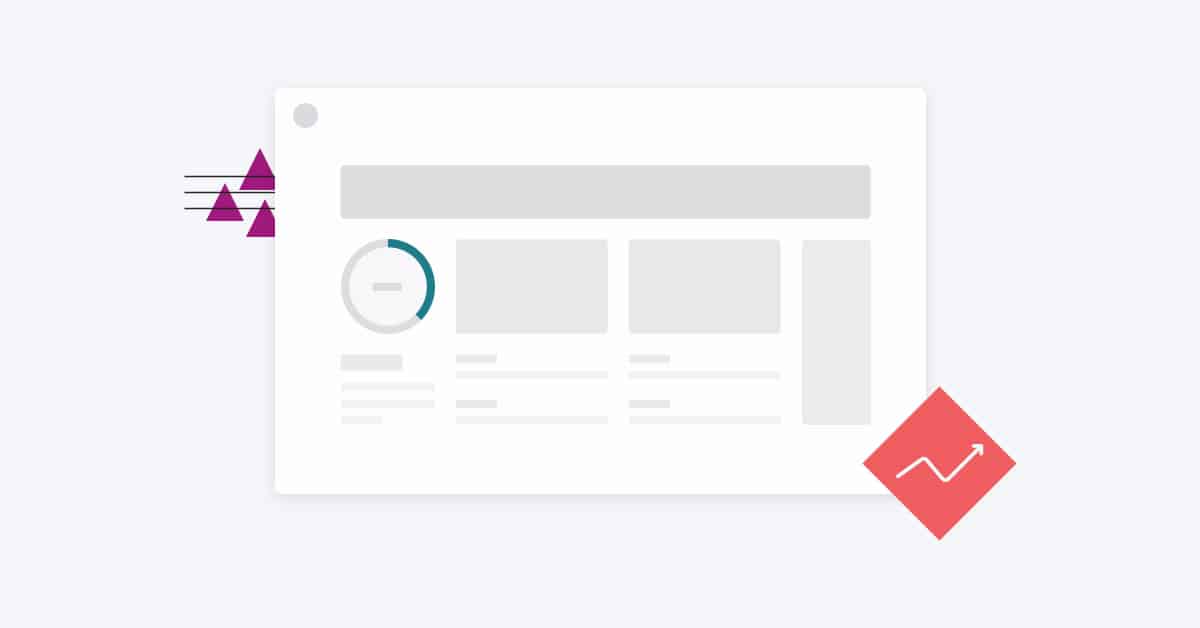Conversion Optimization
5 minute read
Website Conversion Rate Optimization: What To Know Before Your Redesign.
LAST UPDATED:
June 19, 2023


These days, it takes more than just having a website to make the most of your online presence. Consumers are looking for the ultimate user experience, and if your website doesn’t provide it, they’ll take their business elsewhere. This can do irreparable damage to your site’s performance and, ultimately, your brand’s reputation.
You’re not alone, though. The average landing page conversion rate is only around 2.35%. However, the top 25% of websites have conversion rates that are more than double this number.
To get the most out of every website visit, you need to pay careful attention to website conversion rate optimization. Understanding the principles of CRO helps you optimize your site to draw in more visitors and convert them into paying customers.
Understanding Conversion Rate Optimization
Conversion rate optimization (CRO) refers to the process of improving your website’s ability to convert visitors into paying customers. It entails processes like analyzing visitor behavior, testing different design elements, and tweaking content for maximum impact.
Optimization is crucial if you want to make the most of your website redesign. A good CRO strategy will ensure that visitors are more likely to take the desired action (e.g., buying a product, signing up for a newsletter) when they land on your page.
Key Metrics and Goals of CRO
These are the overarching metrics and goals of CRO:
Increase Conversion Rates
CRO helps identify areas of improvement in order to maximize conversions from visitors. Conversions don’t just mean getting a visitor to purchase something, it can also mean getting them to download a free tool or sign up for your newsletter.
The main point is to get them to give their information, which you can use to nurture them into becoming loyal customers or followers.
Improve User Experience
User experience (UX) plays a key role in CRO. UX is how visitors interact with your site. Making sure your site is user-friendly and easy to navigate ensures visitors can find what they need quickly and easily, helping to increase the chances of conversion.
Elements like page layout, color scheme, font choices, navigation menus, and page load times can all contribute to a great user experience that converts.
Boost CTA Effectiveness
Your calls-to-action (CTAs) also affect the success of your redesign efforts. CTAs should be simple, yet powerful. They must stand out from the rest of your website and be easily located. Furthermore, they should make use of persuasive language to encourage the user to take action.
Creating effective, eye-catching CTAs that are easy for users to find and click on can improve your conversion rate optimization significantly.
Evaluating Your Current Website
Before launching into a website redesign, it’s important to evaluate your current website and its performance. Start off by looking at the conversion rate of each page on your site. This will help you determine which pages are converting visitors into leads or customers and which areas need improvement.
Additionally, look at what types of content are attracting more attention from viewers. This can also provide insight as to what is working well and what could be adjusted with the upcoming redesign.
Defining Website Redesign Goals
After getting an idea of what’s working and what’s not working on your current site, it’s time to dig deep and understand what you want your growth-driven design to achieve. Do you want your site to:
- Generate more sales and leads?
- Boost traffic and engagement?
- Enhance user experience and improve usability?
All of these objectives are important, but you must also consider how they work together.
For example, increasing website traffic is only helpful if it helps generate more conversions. Similarly, improving the user experience can help increase conversions but won’t matter much if visitors don’t stay on your site long enough to purchase anything.
Crafting a Conversion-Focused Design
One of the quick-win steps of CRO is to focus on whitespace and design. The goal is to make sure the website focuses on the primary message or call-to-action (CTA).
This means having clear navigation, a well-organized layout, and plenty of whitespace. Whitespace helps to draw attention to key elements and creates an overall sense of clarity for visitors, which in turn can help increase conversion rates.
When designing your website be sure that you are taking into account how users interact with it. This includes understanding their expectations and how they progress through the website. For example, with contact forms, make sure that you keep them short and have enough whitespace so that users don’t feel overwhelmed.
Optimizing Landing Pages and Calls to Action
Landing pages are the entry point for visitors to your website, so it’s important that they be designed with optimization in mind. Personalized landing pages are a great way to increase conversions as they give visitors a more tailored experience.
Additionally, calls to action should be clear and concise, as too many options can confuse visitors and actually cause them to leave the page without taking any action.
Catering to the Mobile Audience
With 6.8 billion smartphone users, this consumer segment should be at the heart of your website redesign. Also, with Google’s new mobile-first indexing policy, it is more important than ever to ensure that your website functions and looks great across all devices.
To make the most of this wave of mobile users, ensure that you are catering to their needs by incorporating mobile-friendly design features such as responsive web design, accelerators, and larger clickable areas.
Measuring and Analyzing Results
Analyzing data from Google Analytics can tell you a lot about user behavior on your site. Look at which pages generate the most traffic, what content users browse, and the paths they take to get there. You can also use this information to identify any areas of your site that could be improved, such as pages with high bounce rates or low conversion rates.
The most important data you need to calculate for website optimization is your overall conversion rate. This is the percentage of visitors who complete a desired action (such as making a purchase) out of all those who visit your site. Knowing this number allows you to measure the effectiveness of your website and track changes as you make improvements.
Transform Your Website for CRO: Take Action for Success
When it comes to website conversion rate optimization, having the right knowledge and taking action is essential. Knowing what factors affect conversion rates, conducting A/B tests, and analyzing user behavior all serve to help you understand where improvements can be made. With a thoughtful redesign that takes into account the needs of users, your website will become an effective tool for turning visitors into customers.
Investing time and effort into researching CRO before making changes to your website will lead to success. Huemor has the resources to help you identify and implement CRO strategies for your website. Subscribe to our newsletter today for more tips straight to your inbox and get started on transforming your website.
- Understanding Conversion Rate Optimization
- Evaluating Your Current Website
- Defining Website Redesign Goals
- Crafting a Conversion-Focused Design
- Optimizing Landing Pages and Calls to Action
- Catering to the Mobile Audience
- Measuring and Analyzing Results
- Transform Your Website for CRO: Take Action for Success
Author
Jeff Gapinski is the President of Huemor where he helps plan the long-term strategic growth of the agency. Jeff is passionate about UI/UX, demand generation, and digital strategy.
What Do You Think?
Have feedback? Maybe some questions? Whatever it is, we'd love to hear from you.







No comments found